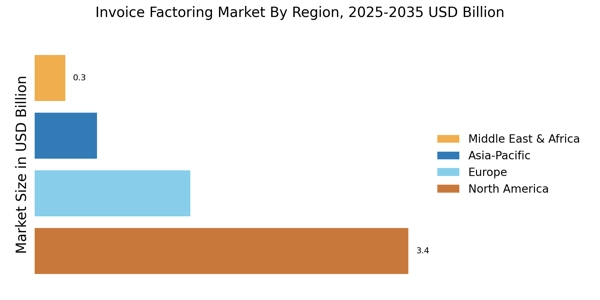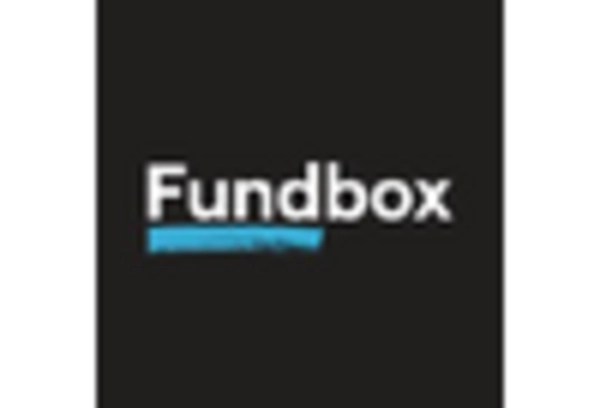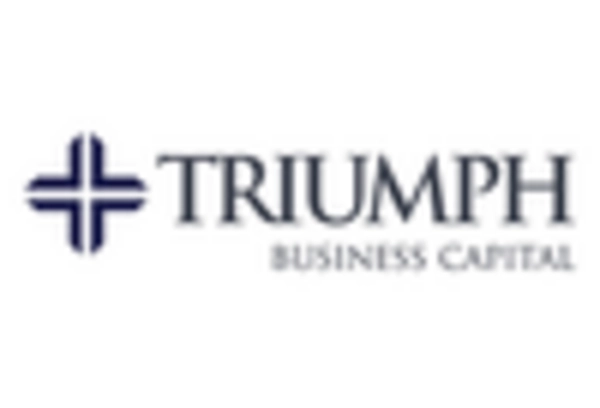Rising Need for Cash Flow Management
The Invoice Factoring Market is experiencing a notable increase in demand due to the rising need for effective cash flow management among businesses. Companies, particularly small and medium-sized enterprises, are increasingly recognizing the importance of maintaining liquidity to meet operational expenses. As per recent data, approximately 70% of SMEs face cash flow challenges, which can hinder growth and sustainability. Invoice factoring provides a viable solution by allowing businesses to convert their receivables into immediate cash, thus alleviating financial strain. This trend is likely to continue as more companies seek to optimize their cash flow strategies, indicating a robust growth trajectory for the Invoice Factoring Market.
Shifts in Consumer Payment Preferences
Shifts in consumer payment preferences are also shaping the Invoice Factoring Market. As consumers increasingly favor digital payment methods, businesses are adapting to these changes by offering various payment options. This shift can lead to longer payment cycles, as businesses may experience delays in receiving payments from customers. Consequently, companies are turning to invoice factoring to mitigate the impact of these delays on their cash flow. Recent data indicates that businesses utilizing factoring services report a 30% improvement in cash flow management. This trend suggests that the Invoice Factoring Market is likely to see sustained growth as businesses seek to navigate the evolving landscape of consumer payment preferences.
Expansion of E-commerce and Online Businesses
The rapid expansion of e-commerce and online businesses is significantly influencing the Invoice Factoring Market. With the rise of digital transactions, businesses are generating a higher volume of invoices, which in turn creates a greater demand for factoring services. Recent statistics suggest that e-commerce sales have surged, with projections indicating a growth rate of over 15% annually. This surge necessitates efficient cash flow solutions, as businesses often face delays in receiving payments from customers. Invoice factoring serves as a crucial tool for these businesses, enabling them to access funds quickly and maintain operational efficiency. Consequently, the growth of the e-commerce sector is expected to propel the Invoice Factoring Market forward.
Technological Integration in Financial Services
The integration of technology within financial services is transforming the Invoice Factoring Market. Innovations such as artificial intelligence and blockchain are streamlining the factoring process, making it more efficient and transparent. For instance, AI-driven platforms can assess credit risk more accurately, enabling faster decision-making for businesses seeking factoring services. Additionally, blockchain technology enhances security and traceability in transactions, which is increasingly appealing to businesses. As technology continues to evolve, it is expected that the Invoice Factoring Market will benefit from improved operational efficiencies and enhanced customer experiences, potentially leading to increased adoption rates among businesses.
Increased Awareness of Alternative Financing Options
There is a growing awareness among businesses regarding alternative financing options, which is positively impacting the Invoice Factoring Market. Traditionally, many companies relied on bank loans for financing; however, the complexities and stringent requirements associated with these loans have led businesses to explore more flexible solutions. Invoice factoring offers a straightforward approach, allowing companies to leverage their receivables for immediate cash. Recent surveys indicate that nearly 60% of businesses are now considering factoring as a viable alternative to traditional financing. This shift in perception is likely to enhance the attractiveness of the Invoice Factoring Market, as more businesses seek accessible and efficient funding solutions.


















Leave a Comment